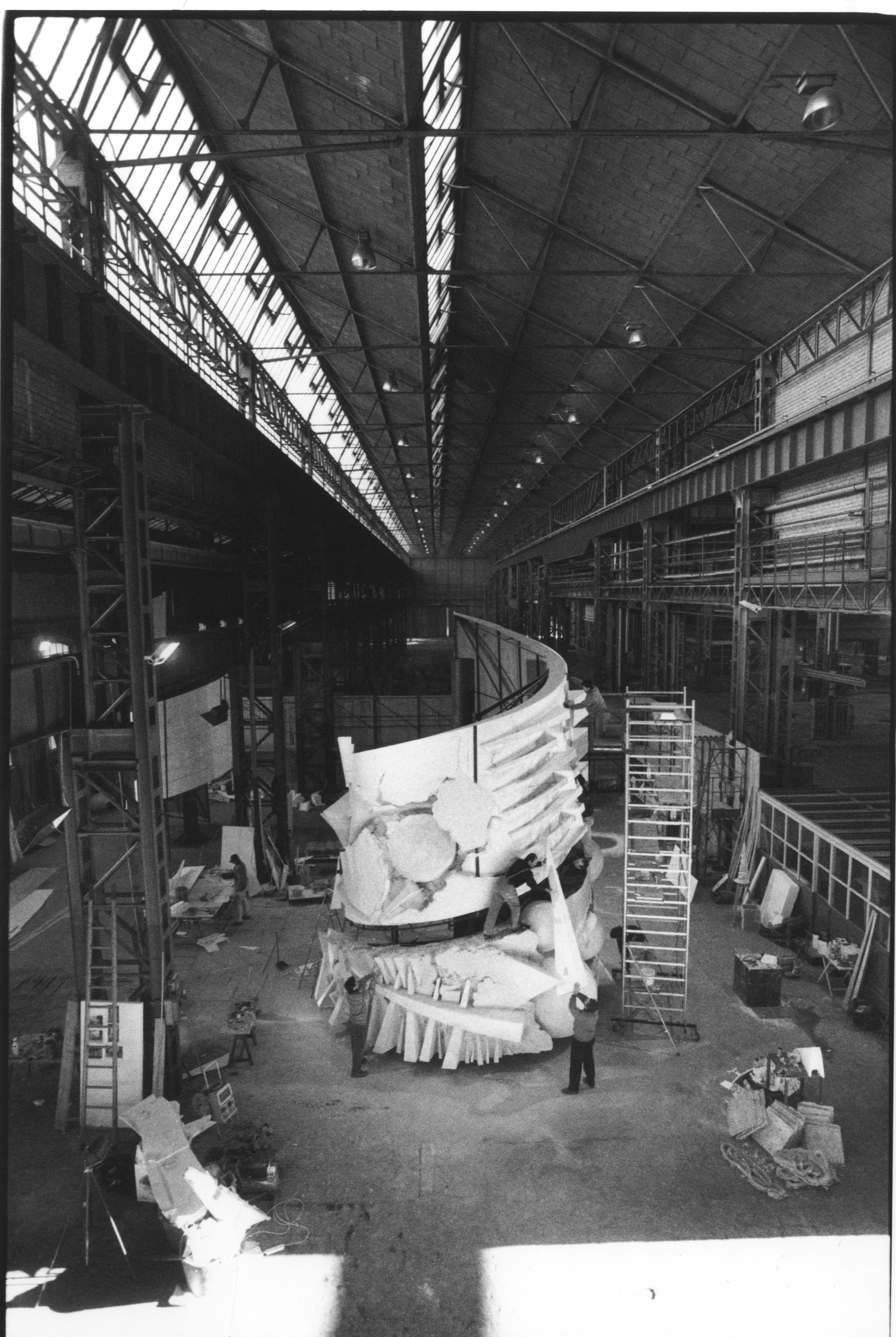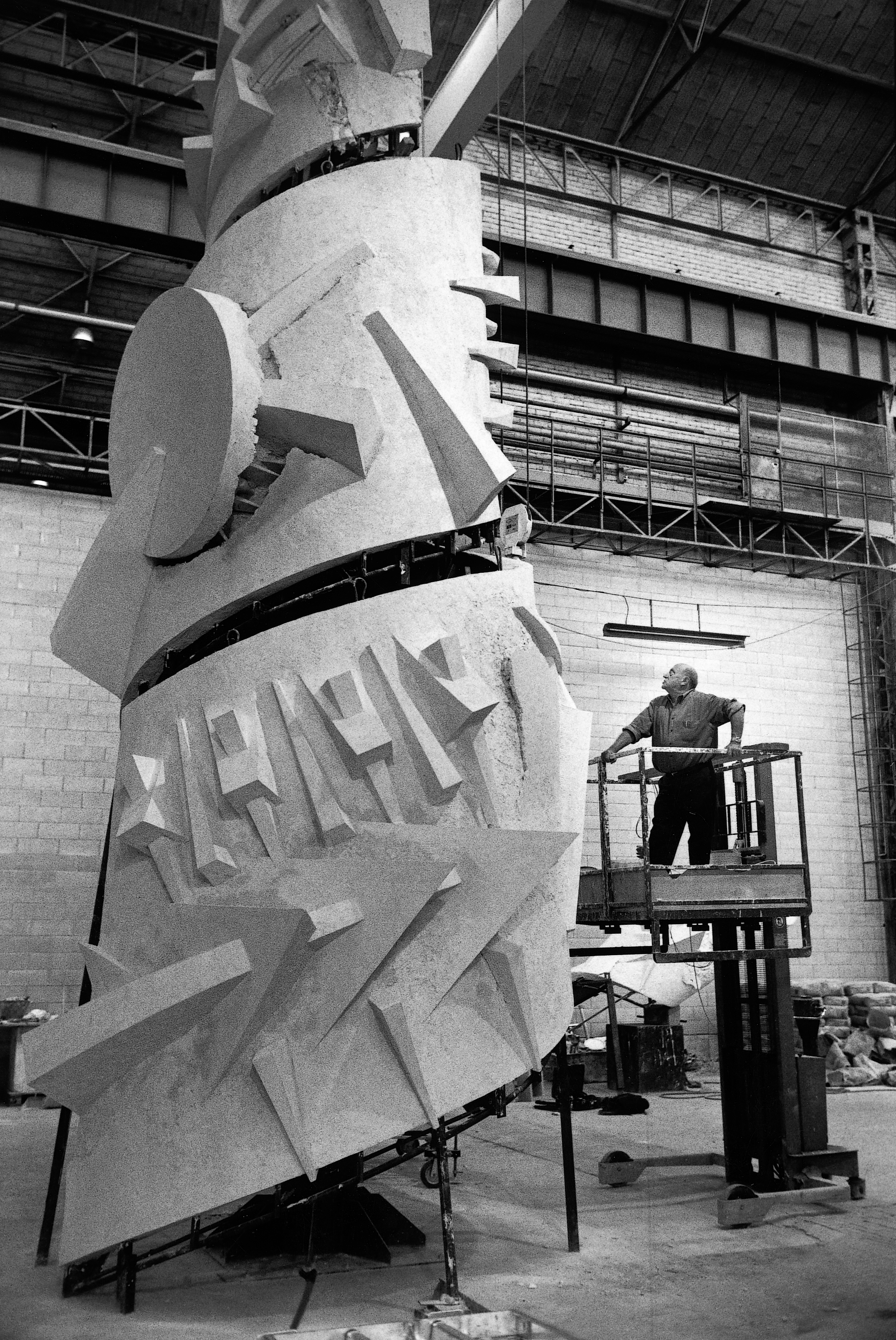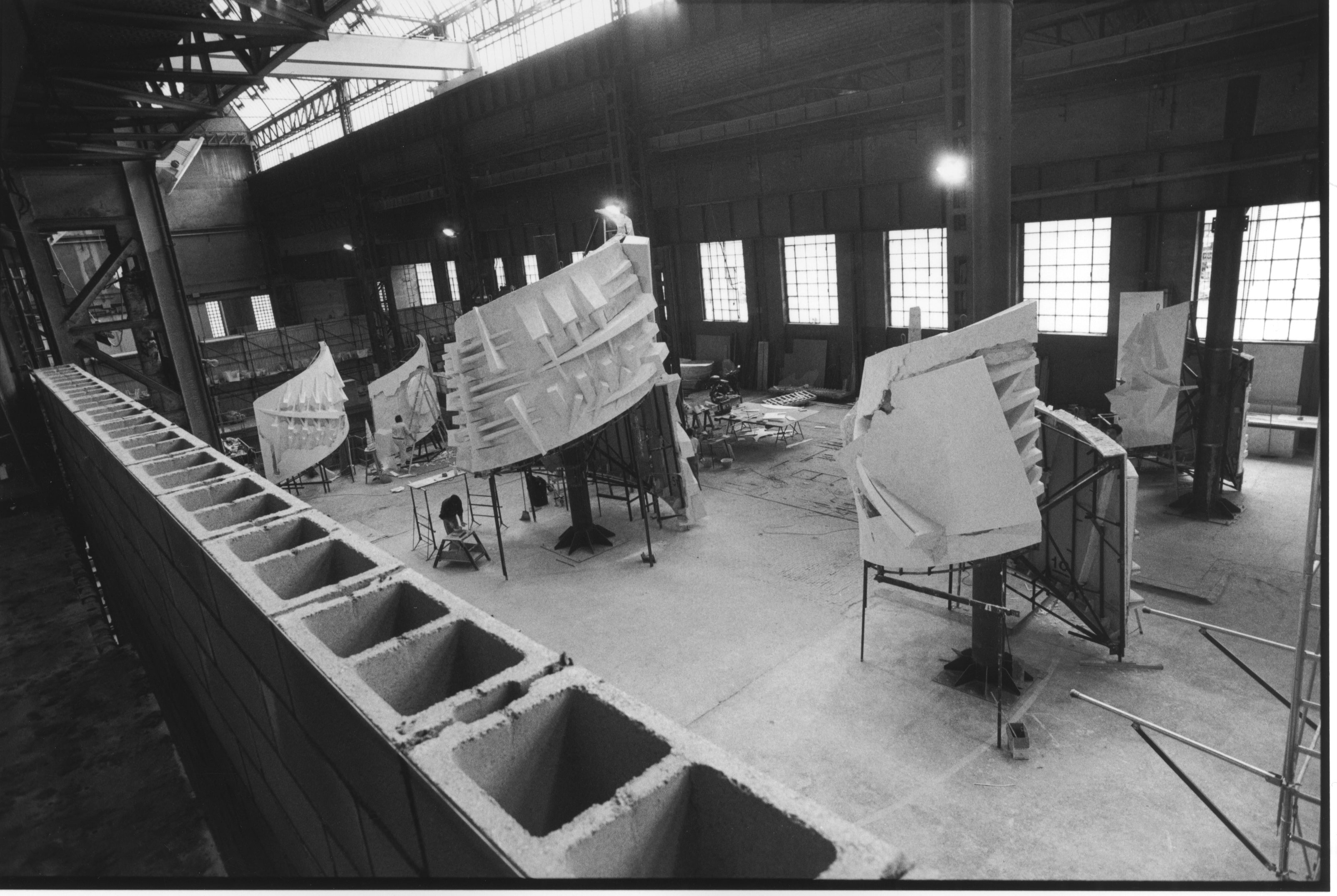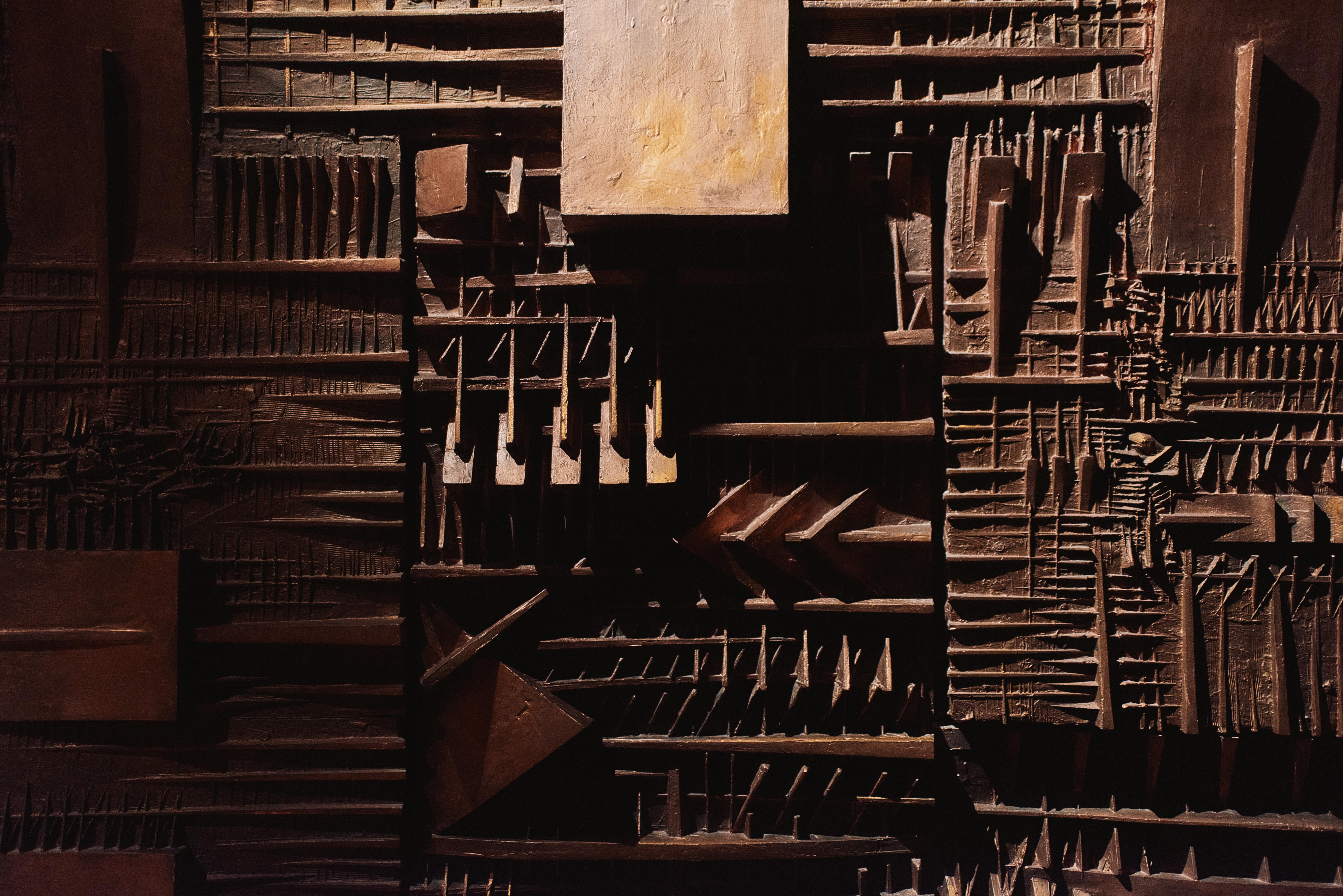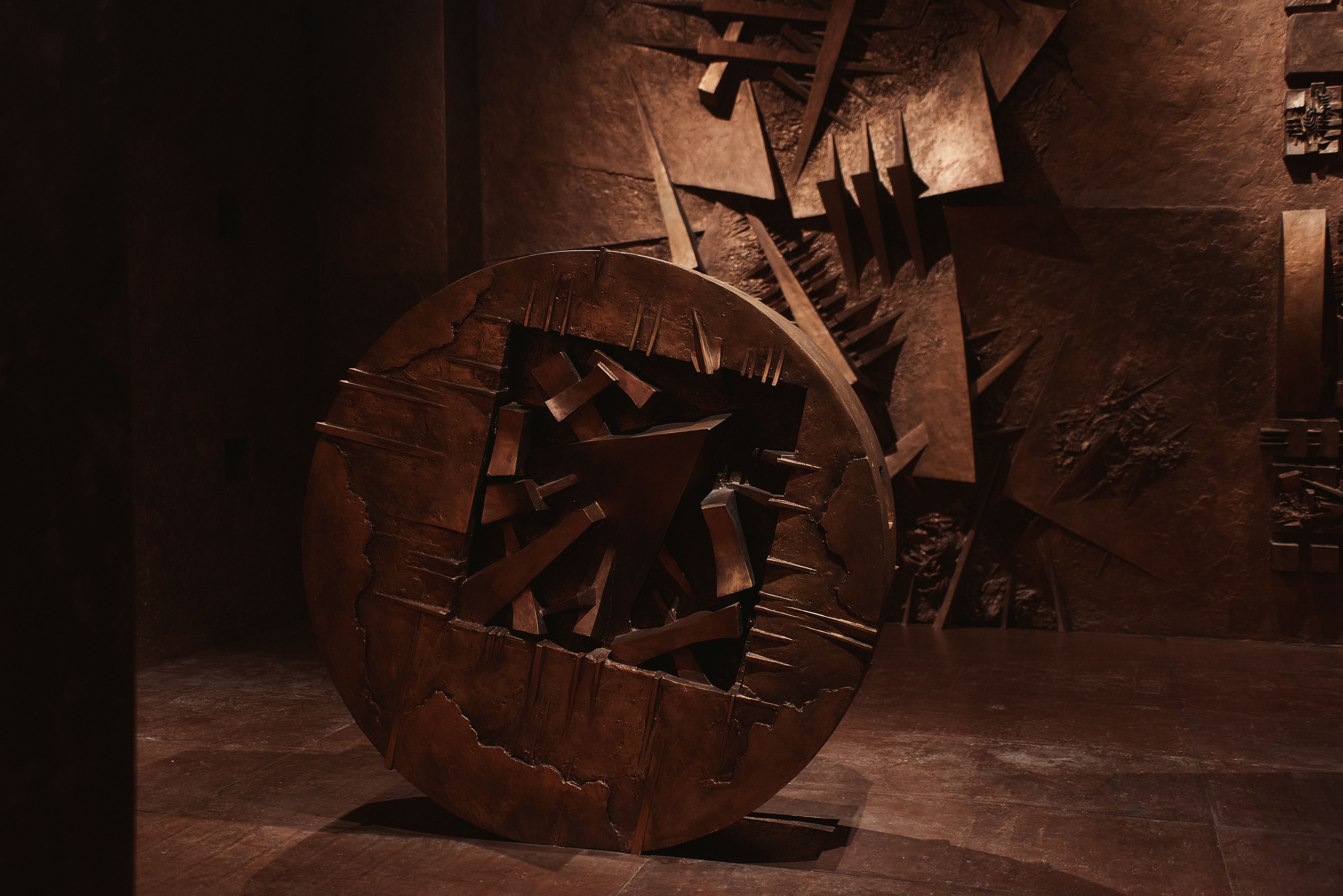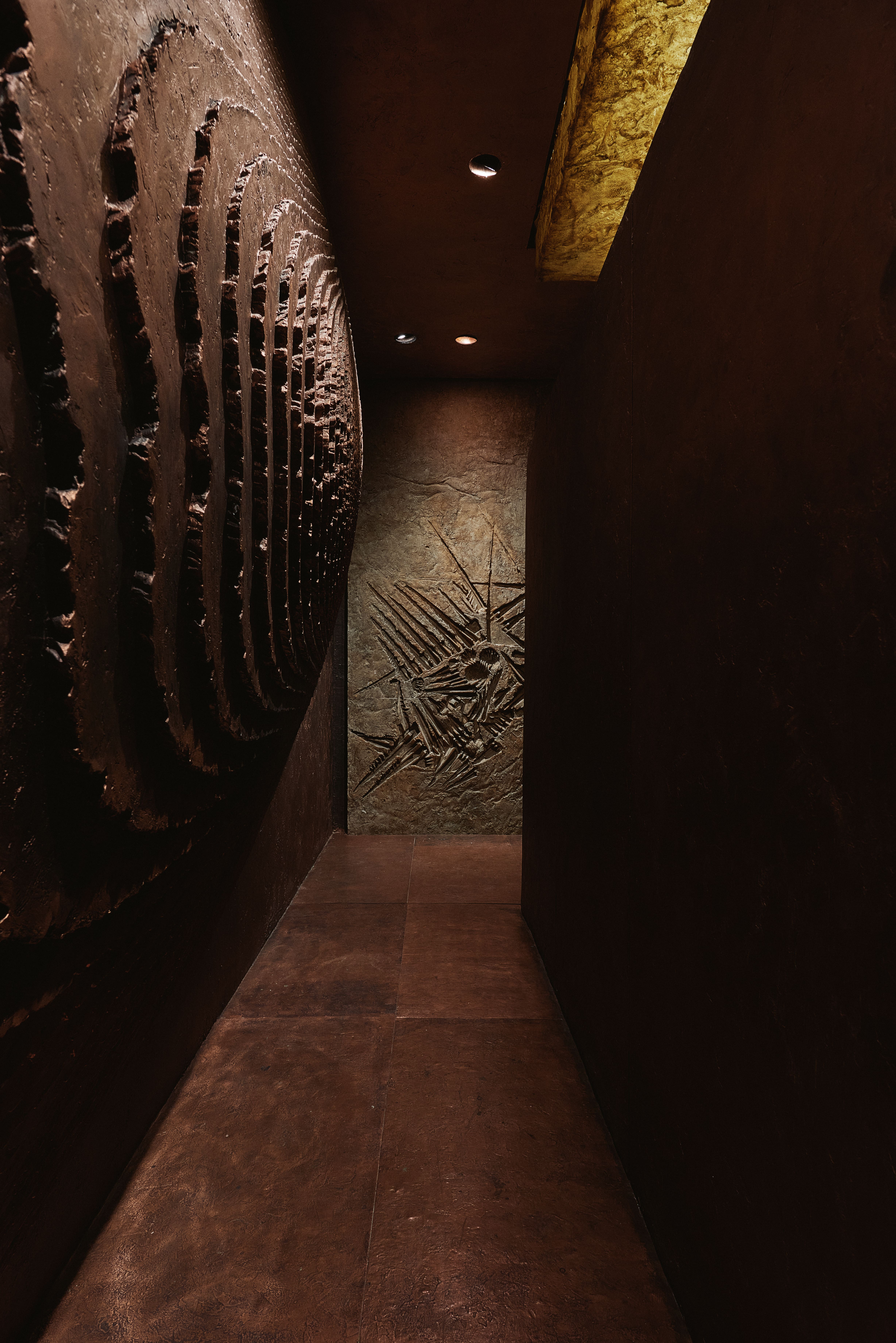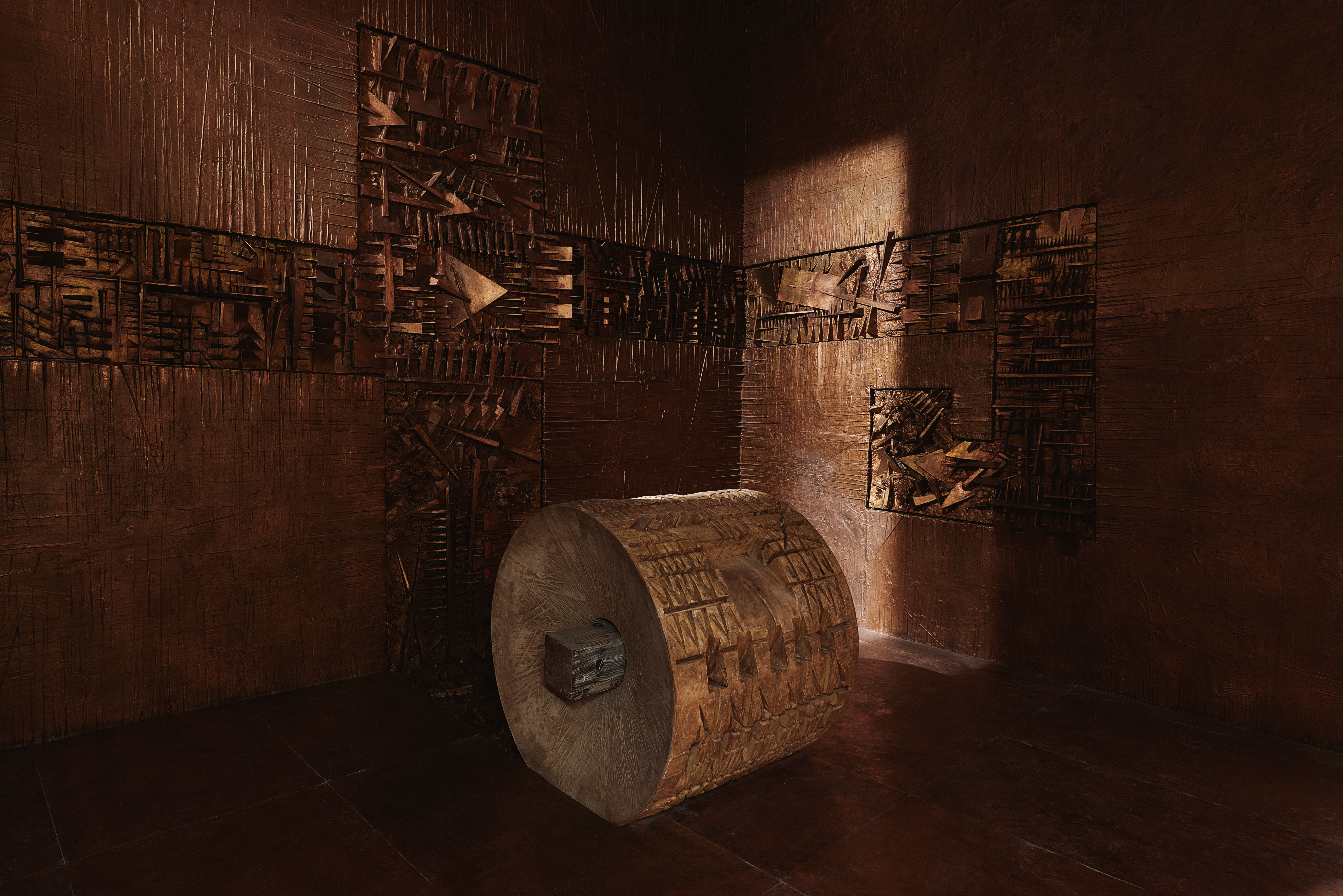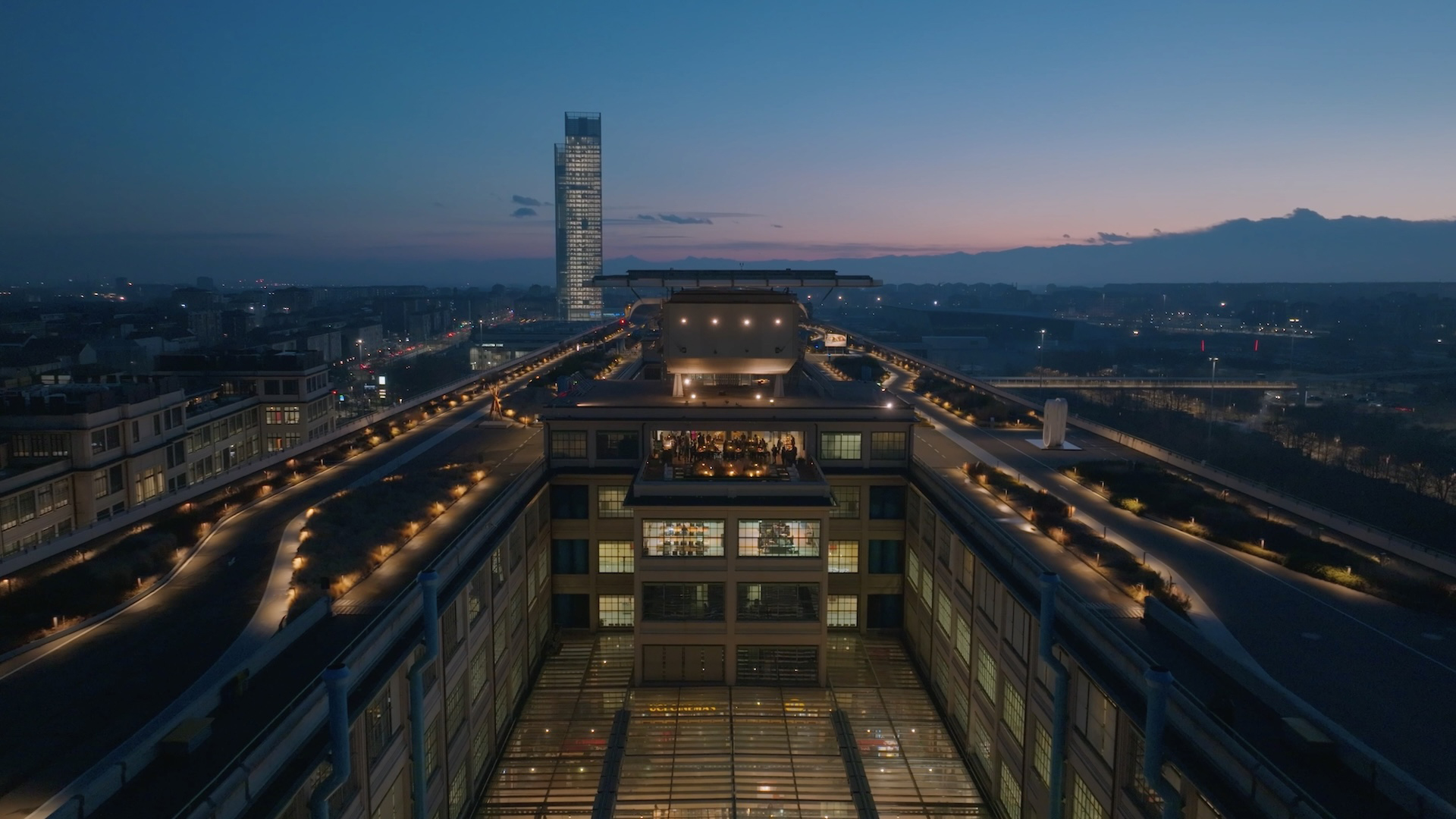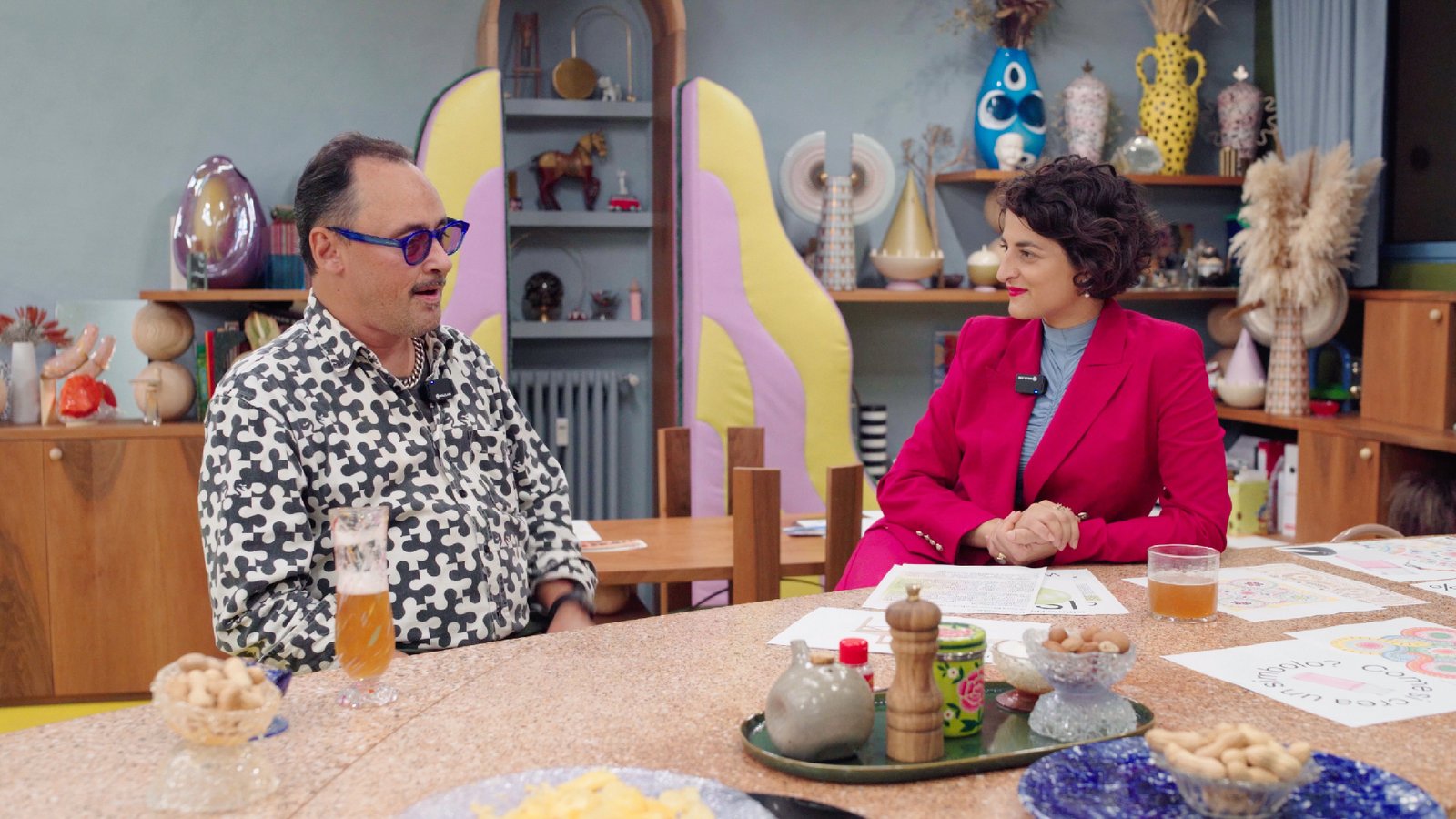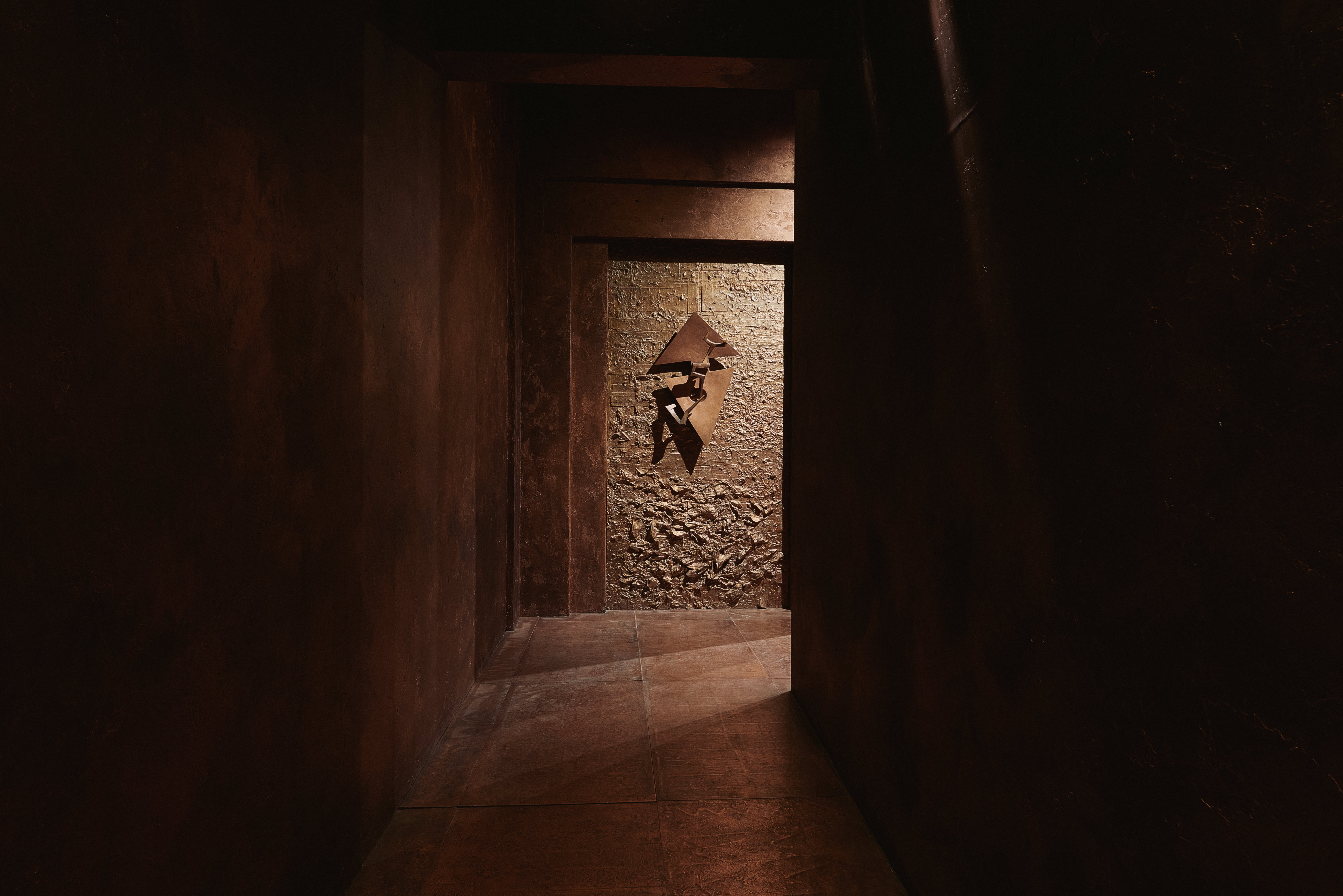
Arnaldo Pomodoro's Labyrinth Reopens in Milan
An immersive experience of art, sculpture, and myth in the underground spaces of FENDI in collaboration with Arnaldo Pomodoro Foundation
The Arnaldo Pomodoro Foundation has reopened the Labyrinth to the public—one of the most evocative works by the artist (Montefeltro, 1926), located beneath the recently renovated Milanese headquarters of Maison FENDI. Open to visitors starting March 20 (by reservation only), this immersive piece offers a unique journey through art, history, and myth, deep beneath the streets of Milan. A labyrinth not of space, but of time—where, in the artist’s words, “time is transformed into space, and space in turn becomes time.” Here, the iconic features of Pomodoro’s poetics come together: a sculptor who, since the 1950s, has shaped a distinct and recognizable language of his own.
 Arnaldo Pomodoro, Costume of Dido (left) and Costume of Creon (right), photograph by Andrès Juan Suarez, courtesy of Arnaldo Pomodoro Foundation
Arnaldo Pomodoro, Costume of Dido (left) and Costume of Creon (right), photograph by Andrès Juan Suarez, courtesy of Arnaldo Pomodoro Foundation
Stepping into the Labyrinth is a journey through Pomodoro’s artistic practice, deeply rooted in the fascination for signs— “especially archaic ones,” he once explained to critic Sandro Parmiggiani. “The impressions I carve into the material—wedges, threads, lacerations—come at their core, from ancient civilizations.” It's no coincidence that visitors are greeted by a rotary press, evoking the artist’s profound connection to matter, or as he calls it, the “buzzing of matter.” It signals a creative process that always begins from the negative—sculpting blocks of clay or earth by hand—and works slowly and laboriously toward the positive form.
The entire piece is made from fiberglass, a material Pomodoro first encountered through his work as a set designer for the theatre. Within the Labyrinth, known and evolving sculptures alternate in a timeless space, where the boundaries between past and present dissolve. Among the highlights is the Tavola della Memoria (1959), here rendered in fiberglass—a kind of primer of the signs and forms central to the artist’s visual language. At the heart of the Labyrinth lies Cagliostro’s Cell, created in 1997 for an exhibition at the fortress of San Leo. Cagliostro, the infamous 18th-century alchemist, was condemned to life in prison by the Catholic Church and died after four years locked in a windowless, doorless cell—faithfully reconstructed by Pomodoro in its original size. Legend has it that Cagliostro wrote a diary page each day during his imprisonment. Though lost, this legacy is reimagined in the surrounding walls with Continuum (2010), a mosaic of miniature written tiles, created with the precision of a mosaicist and the intuition of an alchemist.
More than a self-celebratory monument, the Labyrinth becomes an introspective snapshot of a creative process driven by experimentation—one that makes no claim to absolute truth. Fittingly, one panel is purposefully “flawed,” where the transition from negative to positive has not reached a successful outcome. The signs collapse inward rather than emerging, bearing witness to an artist who, in his tireless search for new codes, has embraced even missteps and mistakes. The journey ends with a sculpture carved in cuttlebone—a technique Pomodoro learned as a young goldsmith’s apprentice in Pesaro.
In continuing the partnership between FENDI and the Arnaldo Pomodoro Foundation, the reopening of the Labyrinth offers a transformative voyage through the imagination of a true demiurge—an artist who has shaped the world according to his own personal cosmogony.
Immagine di copertina: Il Labirinto, Fondazione Arnaldo Pomodoro
An art critic and curator, she writes for Italian and foreign magazines with a focus on contemporary art and attention to fashion, design and photography. An independent curator, she has produced photography and contemporary art exhibitions, art books and exhibition catalogues. She teaches History of Fashion and Text Methodology at the IED in Milan, where she is also a consultant for the area of artistic research. In 2014, he launched his blog thedummystales.com, a cultural destination where art and fashion have been dialoguing in unison, and uninterruptedly, for more than 10 years.
